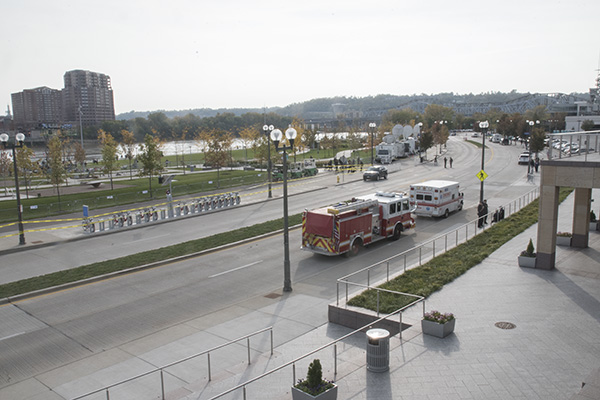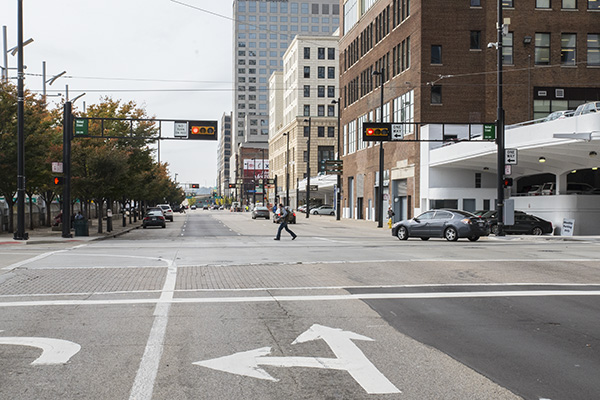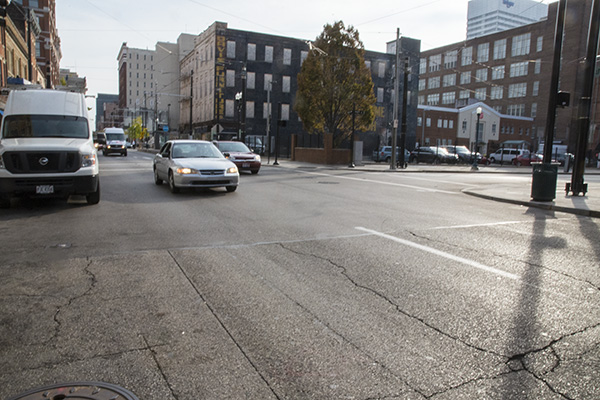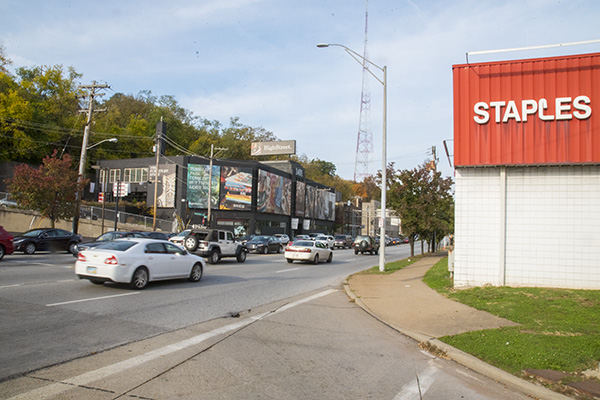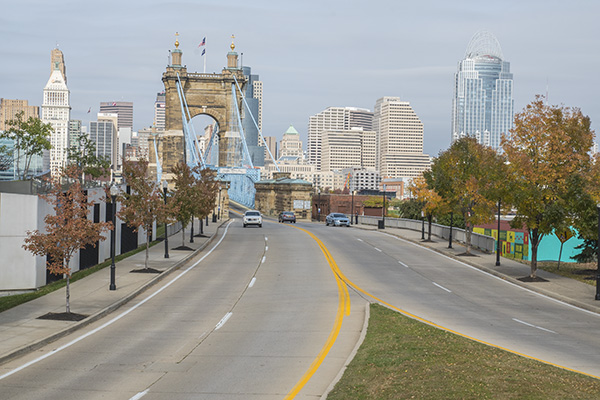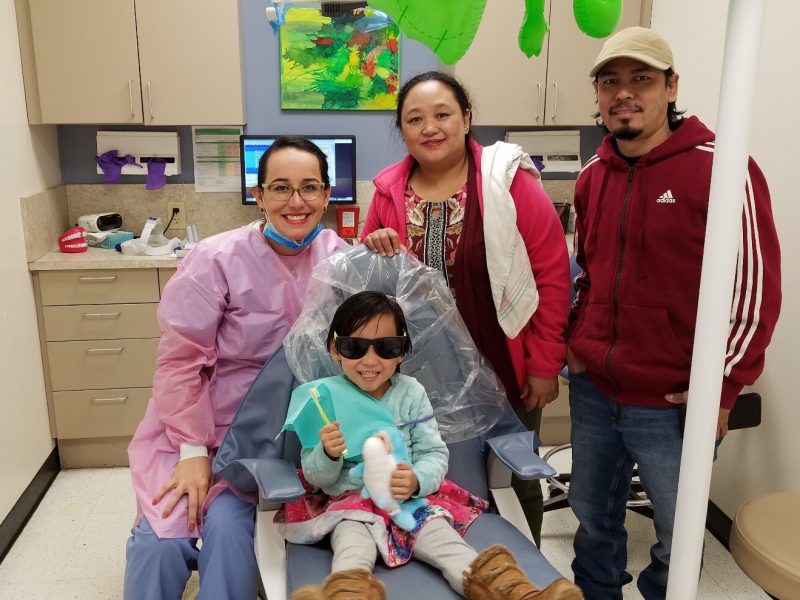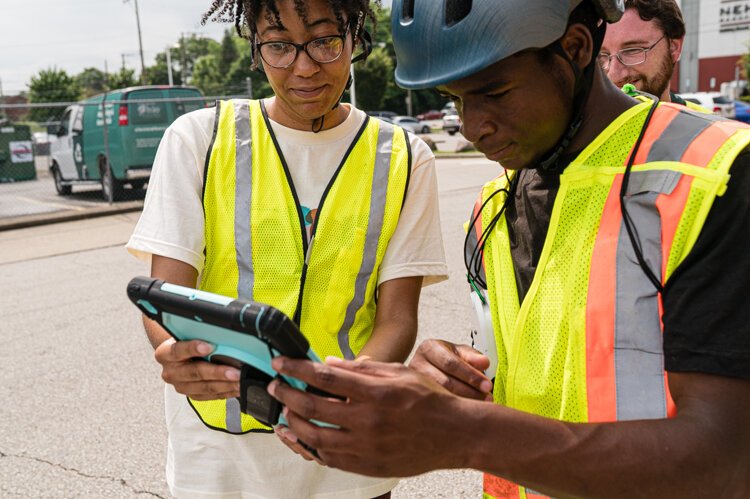Soapdish: Top 5 mean streets for pedestrians
Columnist Casey Coston tackles the problem of walkable, bikeable cities and picks the five most hazardous pedestrian intersections.
Getting your Trinity Audio player ready...
A recent United Nations sustainable development report found that the lack of investment in safe walking and cycling infrastructure not only contributes to the deaths of millions of people in traffic accidents on unsafe roads and poorly designed roadways, but also overlooks a great opportunity to boost the fight against climate change.
The report noted that 1.3 million people die each year from traffic accidents, of which 49 percent are pedestrians, cyclists and motorcyclists. Four African countries are among the most dangerous countries to walk and cycle. Some 66 percent of all road fatalities were pedestrians and cyclists in Malawi; 61 percent in Kenya; 53 percent in South Africa; and 49 percent in Zambia and Nepal, according to a UN report.
Unfortunately for Cincinnatians, however, you don’t need to go to sub-Saharan Africa in order to get struck by a car. Cincinnati, as of late, has been awash in automobile vs. pedestrian collisions. In just one short week in October, three pedestrians were killed, including a babysitter pushing a stroller in a crosswalk, a walker out for a 7 a.m. stroll in the neighborhood and a 77-year-old woman hit in a downtown crosswalk.
This comes on the heels of Sarah Cole, the owner of Tickle Pickle sandwich shop in Northside, getting struck and killed by a car on Hamilton Avenue, not far from her restaurant’s front door and in the heart of the business district. Three weeks after Cole was killed, a car hit another woman on Hamilton in Northside, breaking her leg. Then, to add further ironic insult to tragic injury, a bicyclist was struck by a car on Hamilton several weeks ago during a “walkabout” rally reminding drivers to watch their speed and yield to pedestrians in crosswalks. The cyclist was carrying a sign honoring Cole, his friend.
An ‘auto first’ ethos
Excessive speed is certainly a problem. Distracted drivers and lack of enforcement are as well.In addition, the Cincinnati mindset also includes an “auto-first” ethos, a dusty remnant of our conservative, suburban-oriented mindset from the latter half of the 20th century. Downtown streets are designed with one thing in mind — funneling east/west commuters to their freeways in the speediest way possible. But also “safest,” as traffic engineers will remind you; however, “safe” in this context is more about patronizing pedestrians, removing them from the streets altogether so that they don’t get in the way of a speeding auto.
This auto-first mentality is also evident at City Hall, where Mayor Cranley, when faced with the prospect of re-timing downtown lights to favor those vehicles typically moving at the speeds of buses and streetcars (which in turn would theoretically reduce congestion while also increasing the streetcar frequency), declared that “I don’t believe that rush-hour traffic should have to wait for the streetcar.” Ridership pointing to the 90 percent of city commuters who travel by car (at least 90 percent of whom, no doubt, pilot that car in complete solitude, as opposed to buses and streetcars, which typically hold far more occupants than your standard commuter vehicle — see also, climate change in UN report, above).
The auto-first mentality was also evident in the uproar over the Central Parkway Protected Bike Lane, with detractors essentially arguing that automobile drivers are incapable of following the rules of law and/or adapting to change, a frightening proposition when considering the carnage that a careless two-to-four ton battering ram can cause, see more at Soapdish Bike Lanes.
In her 1961 masterpiece “The Death and Life of Great American Cities,” Jane Jacobs, the esteemed urban writer, activist and titular urbanista godhead, wrote that the “erosion of cities by automobiles entails so familiar a series of events that they hardly need describing. The erosion proceeds as a kind of nibbling.”
Walkable or bikeable equals livable cities
Taking a cue from Jacobs, cities have gradually come to embrace the “Complete Streets” theory as they move forward into 21st century urban planning. For the curious and/or uninitiated, the Complete Streets ethos, as it were, evokes the concept that the streets of our cities and towns are an important part of the livability of our communities. The goal is to open up the streets for everyone, whether young or old, motorist or bicyclist, brisk, arms-akimbo walker or rolling wheelchair user, dedicated bus rider, streetcar jumper or humble shopkeeper. Unfortunately, however, many of our streets are designed for a single purpose, a dedicated throughway for the glorious and almighty automobile….and, more specifically, the wholesale evacuation of downtown in the most expeditious manner possible, quickly funneling you to your desired interstate of choice with nary a second to spare.
664 cities on board with Complete Streets, smart growth
In order to provide a bit of balance to the auto-heavy equation, states, cities and towns across the country are asking their planners and engineers to build road networks that are safer, more livable and welcoming to everyone. According to the Smart Growth America’s National Complete Streets Coalition, there are now 899 Complete Streets policies in place in the U.S., including 664 in municipalities. Just a decade ago, there were only 32 such policies. By instituting a Complete Streets policy, transportation planners and engineers seek to design and operate the entire roadway with all users in mind — including bicyclists, public transportation vehicles and riders and pedestrians of all ages and abilities, as well as the venerated horseless carriage.Cincinnati made some halting steps toward Complete Streets beginning in 2009, what with the re-opening of Taft and McMillan to two way traffic (in parts), a few bike sharrows, the Liberty Street reconfiguration and the like. Nowadays, however, Complete Streets seems more about re-paving roads, buying new snow plows and filling potholes, as opposed to anything truly transformative.
In light of the spate of recent tragedies involving pedestrians vs. cars, and mindful of the trend toward more complete streets sweeping the nation, I made an informal list of my own, subjective “Top 5 Pedestrian Unfriendly Intersections and Crosswalks in the Basin.” This highly non-scientific survey encompasses what I believe to be some of the more egregious affronts to the average pedestrian navigating our fair urban core’s “mean” streets.
Top 5 mean streets for pedestrians
Number 5: Let’s start at the river with Smale Park, our city’s beautiful new expanse of gardens, landscaped plazas, giant swings, flying pigs, meandering streams and gurgling fountains. As an integral part of the “live, work, play” neighborhood known as “The Banks,” Smale Park is bookended by two major league sports stadiums, thereby guaranteeing massive crowds throughout the year. The park is also bisected, however, by Mehring Way, which at times is akin to a partially divided highway cleaving through the middle of this beautiful park. In order to bridge the divide, there are two crosswalks at the base of the Walnut and Vine street fountains and steps.While Walnut does have a traffic signal, Vine Street’s crosswalk relies on the good graces of the car driver, oftentimes to disastrous effect (based on my personal experience).
Simply put, given the casualties piling up in crosswalks, it would behoove the city to do more than break out the yellow striped paint. For example, blinking lights, bollards in the median and other signage such as crosswalk bollards should be mandatory in these high traffic areas. Playing chicken and/or frogger with oncoming cars is just not that much fun. As a sub-part here, there is a crosswalk on Liberty east of Reading that is even worse, akin to crossing a freeway at times, and traffic calming measures would do wonders for the safety of pedestrians who dare to bridge that divide.
Number 4: Strolling through the park up the hill to Second and Walnut streets, we find another blatant disregard for pedestrians in the name of the almighty traffic flow. Again, this is a tourist area, with large crowds strolling on foot, stadia crowds, Freedom Center crowds, streetcar crowds, the park, the Banks, restaurants and bars, etc. Yet people cannot cross the east side of Walnut at Third. Instead they dead end into temporary barricades that require you to cross three wide streets in order to essentially cross one. Isn’t there a way to allow for both pedestrians as well as cars here? As demonstrated below, this is not an isolated occurrence
Number 3: Somewhat related to 4, but in the highly popular, pedestrian-oriented areas of Over-the-Rhine. Here we have 12th and Main and 14th and Vine, where massive crowds gather for donuts, cocktails, pretzels, fried chicken, ice cream, pho and just about anything else. Unfortunately, however, if you are on the north side of either of these intersections, you cannot cross east or west across the street. The reason for this obstacle is unclear, other than it might slow the speed by which a driver could make a northbound left turn. But should that really be our main concern in this bustling, pedestrian-rich and historic neighborhood?
Number 2: Not to leave out our Northern Kentucky neighbors, this one is a massive indignity to pedestrians and bicyclists alike. First of all, you have the historic Roebling Suspension Bridge, linking Covington to the Cincinnati riverfront, and aforementioned activities highlighted in #1 supra. Hordes of pedestrians stream across the bridge for events, yet the Kentucky approach is a paved ribbon of high speed traffic, lacking sidewalks, curb cuts or crosswalks for the unfortunate biped. If you were to walk south into Covington, the sidewalk either wraps back toward the river, or a hefty one-foot curb drop leads to an informal dirt path through a tree grove, with little in the way of pedestrian safety or wayfinding.
Last, but most assuredly not least, we have Number 1: Reading Road at Liberty, which is, simply put, an abomination of an intersection for any resident of downtown, OTR, Prospect Hill and/or Pendleton, all neighborhoods seeing an incredible resurgence in urban living [corollary: you know what goes with “urban living?” Not having to drive your car everywhere]. Once again, we find that the northern east/west crosswalk has been eliminated in order to ensure that the massive southern migration of auto-driving Pill Hill workers will not be slowed down on their way to another state. Instead, pedestrians seeking to cross are directed back south and then east across the wide expanses of Liberty, then Reading, and then asked to cross the mouths of freeway entrance and exit ramps in order to get to the other side. These are pedestrians, many of whom would enjoy accessing — on foot — the Elsinore Gate steps to Eden Park and the Cincinnati Art Museum, or perhaps the bizarre twilight zone retail experience that is the downtown Staples store, but for this hellscape of an anti-pedestrian intersection (not to mention if you used the previously discussed Liberty Street crosswalk in #5 to get a jump on the crossing, only to be directed back south again at Reading, you will probably end up just giving up and heading home in frustration).
All is not lost, however. The Sarah Cole tragedy has galvanized the Northside community, while also catalyzing the city, and word on the street is that the city is going to take active measures to calm the traffic on Hamilton, including the possibility of street grade bollards (something traffic engineers previously told me the city would never do), and using Northside as something of a testing ground. Perhaps the tragedy in Northside will yield real progress on this front, opening up a more productive and less myopic dialogue with city planners and traffic engineers on how we can safely “complete” our “streets.”
Complete Streets is not intended to eradicate the automobile, but rather to take a bite back at the endless “nibbling” that erodes our urban cores. Cincinnati would be well served to continue biting back, for the sake of the safety of its citizens as well as its burgeoning profile as a desirable, urban environment. Trust me, it’s the right thing to do, just ask Portland, Austin, New York, Chicago, Seattle, Boulder, Charlotte et al.
NOTE: The City was given the opportunity to reply to my list of Top 5 Most Pedestrian Unfriendly Intersections and Crosswalks, this reply came in after the story was in production:
Number 1: Where there are multiple lanes of cars making the same turning movement, we will sometimes omit the crosswalk that’s most directly impacted by the turns. The visibility of a pedestrian entering crosswalk may be obscured by the turning movements. The pedestrian crossing time will also add extra time to the signal cycle, as the multiple turns across that leg of the intersection can’t occur at the same time as the pedestrian crossing. It’s often difficult to balance both needs, particularly at intersections with heavy traffic volumes. We might be able to revisit this arrangement once the new MLK Interchange opens and new travel patterns emerge.
Number 5: (a) There has been a crosswalk here for several decades, but until 2006 it was all open pavement, no island, no refuge, just paint striping. DOTE constructed the island in 2006 to shorten the legs of the crossing and to provide some “friction” to help slow traffic. We recently reinstituted parking on the south side of Liberty from Sycamore to the top of the hill to provide some parking relief during Zeigler Park construction, but also for this “friction.” We can investigate pedestrian volumes here to see if it meets the threshold for flashers.
Number 5: (b) The east cross walk is part of the signal at the garage entry and has a pedestrian actuation button. The western crosswalk will ultimately be included in the signal at that garage/parking entry. (I have to check on the schedule for installation.)
Number 4: The answer here is similar to that in the first question, but is further compounded by the short block over Fort Washington Way. The short block doesn’t provide enough space to stack cars deep, so they are stacked wide, which requires the triple left-hand turn for drivers headed out to Columbia Parkway, I-71 and I-471. Granted, the crosswalk configuration is less convenient, but is ultimately safer.
Number 3: We have had calls with the same inquiry, and we have been considering adding the crosswalks you describe.
Northside: We are working on a number of measures to help slow traffic in the Northside community and to improve pedestrian safety based upon the correspondence from the Northside Community Council.
Generally, we have not added bollards or signs in the middle of the street due to on-going maintenance issues (costs to replace, condition, etc.). We are planning to use this technique/tool in a couple of neighborhood situations soon, so we’ll see how they work and can share our evaluation with you if you’re interested. — Michael Moore, City of Cincinnati

